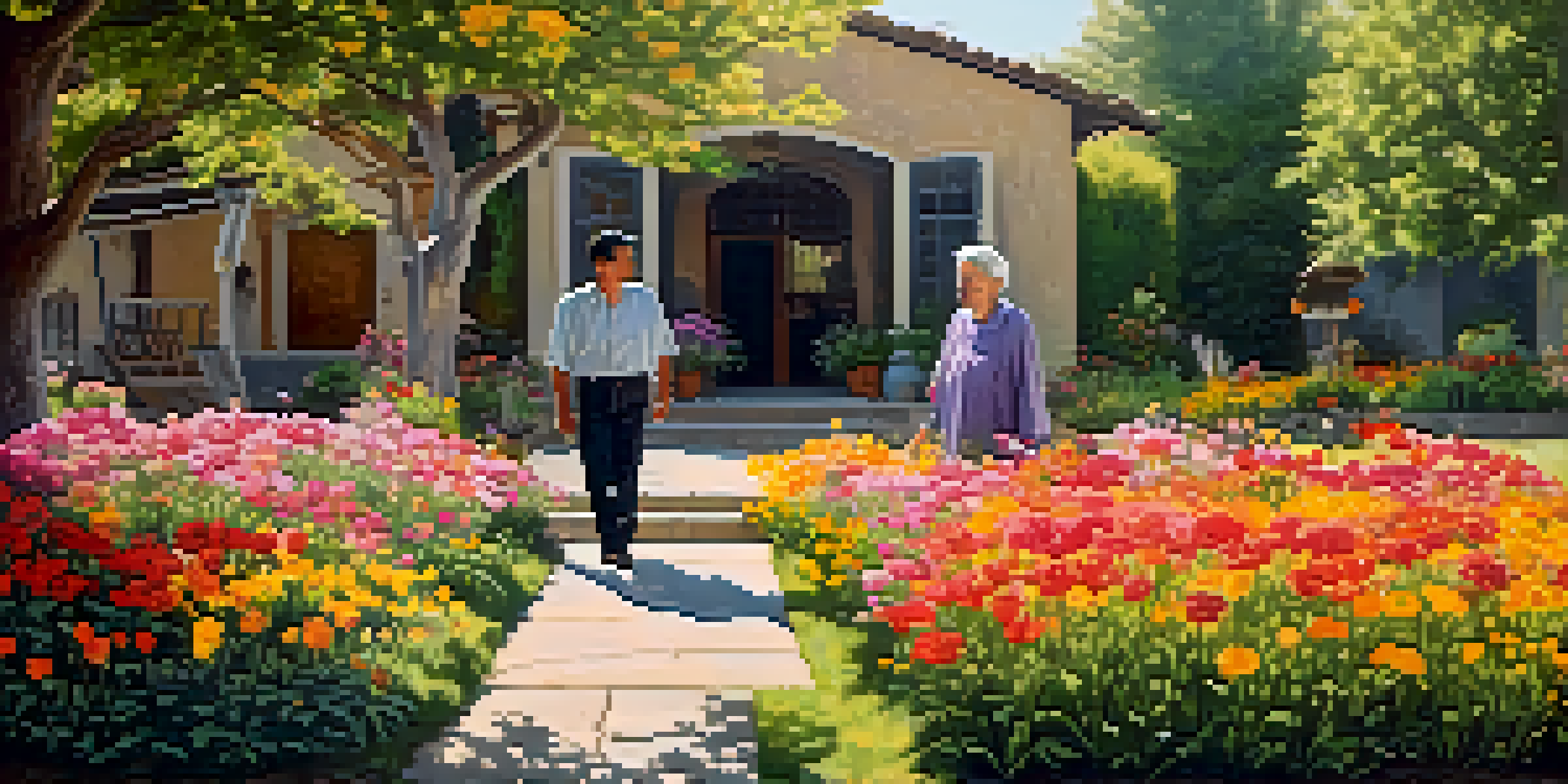Photography Etiquette: Asking Permission in Different Cultures

Understanding the Importance of Asking for Permission
Asking for permission before taking someone's photograph is a fundamental part of photography etiquette. It's not just about respect; it's about recognizing the subject's autonomy and comfort. In many cultures, being photographed can carry significant implications, ranging from privacy concerns to spiritual beliefs.
The camera is an instrument that teaches people how to see without a camera.
For example, in some Indigenous cultures, photography is seen as capturing a piece of the soul. This deep-rooted belief means that many community members may refuse to be photographed, and it's crucial for photographers to honor their wishes. By asking for permission, you create a respectful dialogue that can lead to more meaningful interactions.
Ultimately, understanding the importance of consent lays the foundation for a positive relationship between the photographer and the subject. This approach not only enhances your work but also fosters trust and openness, which are invaluable in capturing authentic moments.
Cultural Variations in Photography Etiquette
Photography etiquette can vary significantly from one culture to another, making it essential for photographers to research local customs. For instance, in some Asian cultures, it’s considered rude to take candid shots without permission, as this can be seen as intrusive. Conversely, in Western cultures, people might be more accustomed to spontaneous photography, especially in public spaces.

In many Middle Eastern countries, there are strict guidelines about photographing women or children, often requiring explicit consent. Ignoring these cultural nuances can lead to misunderstandings or even conflict. Therefore, being aware of these differences allows you to navigate social situations more effectively.
Importance of Asking for Consent
Respecting a subject's autonomy and comfort through permission fosters trust and leads to more authentic interactions.
Taking time to understand these cultural variations not only helps in respecting the subjects but also enriches your photography experience. Engaging with locals and learning their customs can lead to unique perspectives and stories that enhance your work.
The Role of Non-Verbal Communication
Non-verbal communication plays a crucial role in asking permission for photographs. Body language, facial expressions, and gestures can all convey respect and openness, even if language barriers exist. A warm smile or a friendly wave can go a long way in establishing rapport with potential subjects.
Photography is the story I fail to put into words.
In many cultures, a simple nod or thumbs-up can signify agreement, while in others, maintaining eye contact is essential. Observing the reactions of your subjects can help you gauge their comfort level as you approach them for a photograph. This awareness is vital in creating an inviting atmosphere.
By being attentive to non-verbal cues, photographers can better navigate complex social dynamics. This sensitivity not only enhances consent but also builds a more connected and respectful interaction, often leading to more genuine and heartfelt images.
When to Avoid Taking Photos
There are specific situations where taking photos, even with permission, may be inappropriate. Events such as funerals, religious ceremonies, or private gatherings often call for discretion and respect for the participants' emotions. In these cases, it's best to prioritize the significance of the moment over capturing a shot.
Additionally, in some cultures, photographing certain sites, such as temples or memorials, may be prohibited. Ignoring these guidelines can not only offend individuals but also lead to legal repercussions. Understanding when to step back is essential for any photographer who values cultural sensitivity.
Cultural Sensitivity in Photography
Understanding cultural variations in photography etiquette helps avoid misunderstandings and enriches the photographer's experience.
Ultimately, knowing when to avoid photography allows you to approach your craft with respect and integrity. This practice fosters a deeper understanding of the cultures you engage with, ensuring that your work honors the context in which it was created.
Navigating Religious Sensitivities in Photography
Religion often plays a significant role in photography etiquette, influencing what can or cannot be photographed. In many faiths, sacred rituals or ceremonies may be off-limits to outsiders, and participating photographers should be aware of these boundaries. Respecting these rules is crucial for maintaining harmony and avoiding disrespect.
For instance, in Hindu culture, photographing religious idols may be frowned upon, while in some Christian communities, taking photos during Mass can be considered disrespectful. Engaging with local religious leaders or community members can provide valuable insights into acceptable practices and help avoid unintentional offense.
Understanding the intersection of religion and photography not only enhances your work but also enriches your personal experience. By approaching these sensitive topics with care, you demonstrate respect for diverse beliefs and practices, ultimately leading to a more meaningful connection with your subjects.
Building Trust with Your Subjects
Building trust is essential in photography, especially when it comes to asking for permission. Taking the time to engage with your subjects, sharing your intentions, and explaining how you plan to use their images can foster a sense of security. This openness can lead to more genuine interactions and authentic photographs.
Many photographers find that sharing their previous work can help establish credibility and comfort. When potential subjects see examples of how you’ve captured others respectfully, they may be more inclined to agree to be photographed. This transparency can dismantle barriers and create a more collaborative atmosphere.
Building Trust with Subjects
Engaging openly with subjects and sharing intentions can create a sense of security that leads to genuine and candid photographs.
Trust not only enhances the quality of your images but also contributes to a more enjoyable experience for both parties. By prioritizing trust-building in your approach, you create space for candid moments that truly reflect the essence of your subjects.
Learning from Cultural Experiences
Every cultural experience offers valuable lessons for photographers, especially regarding etiquette and consent. Engaging with local customs and traditions not only enriches your photography but also deepens your understanding of the world around you. These experiences can transform your perspective and influence your artistic vision.
For example, participating in local festivals or community events can provide insight into the cultural significance of photography in that context. Understanding how different cultures celebrate life can help you capture moments that resonate with authenticity and vibrancy. These insights not only enhance your portfolio but also enrich your personal journey.

Ultimately, embracing cultural experiences allows you to grow as a photographer and as a person. By approaching your craft with an open heart and a willingness to learn, you create a more profound connection with the world and its diverse narratives.